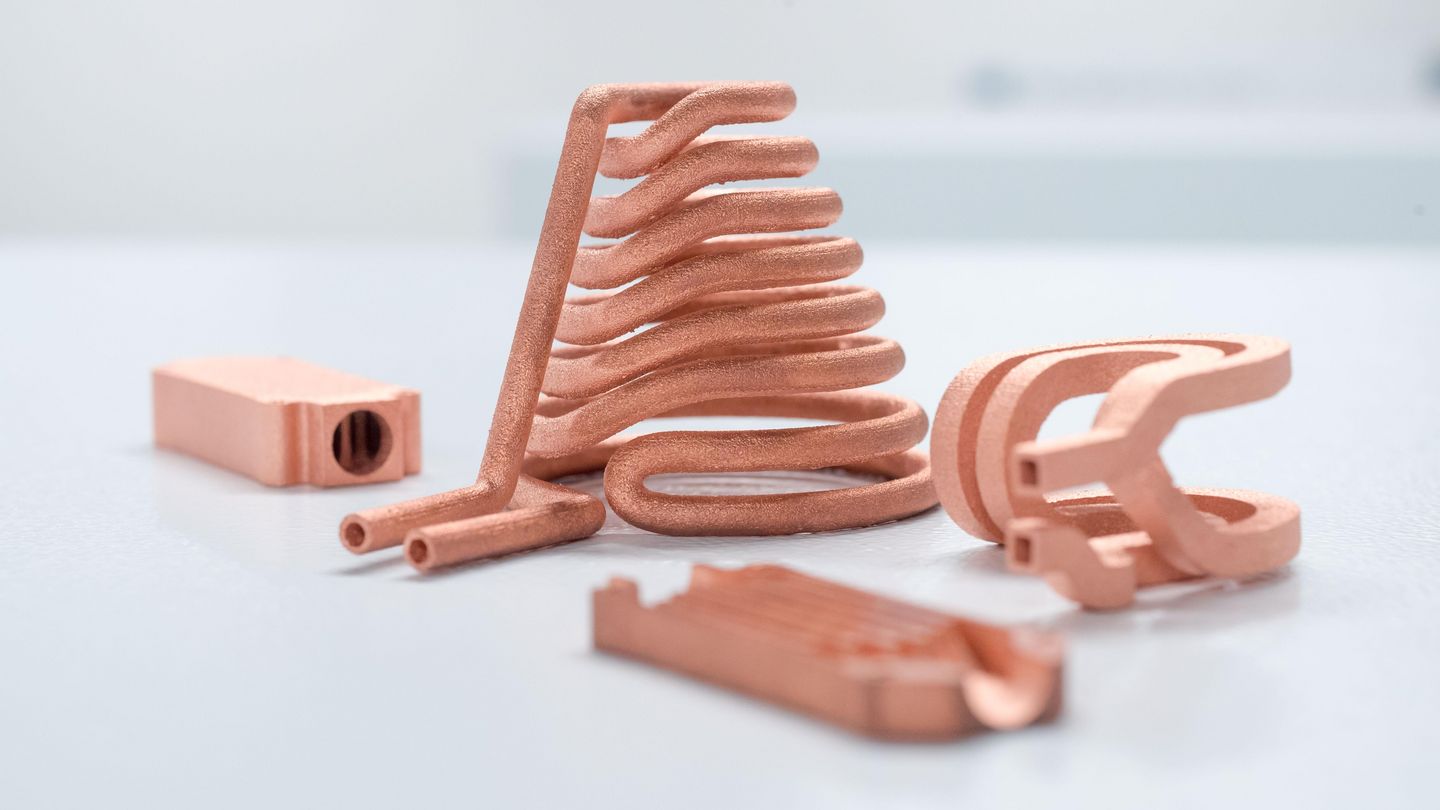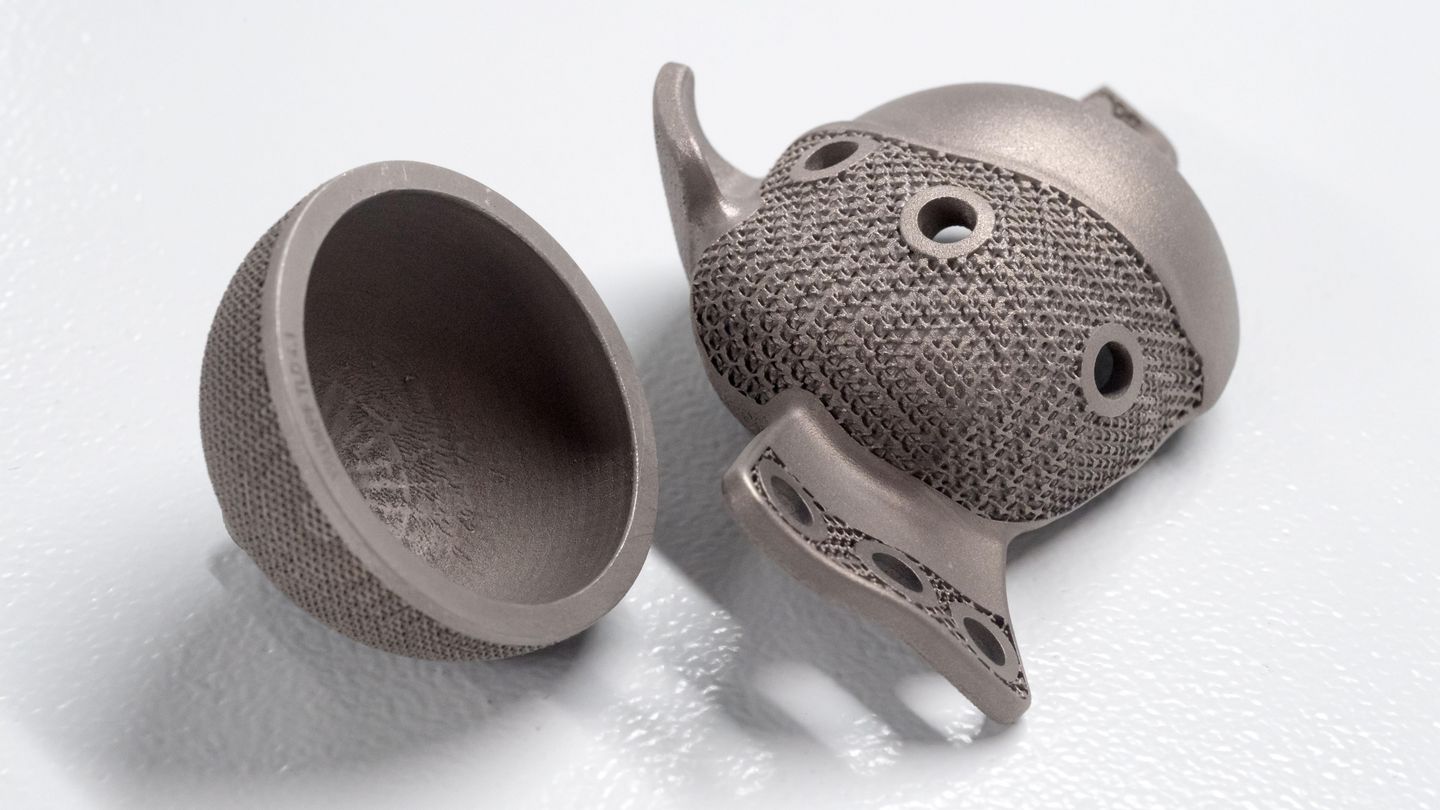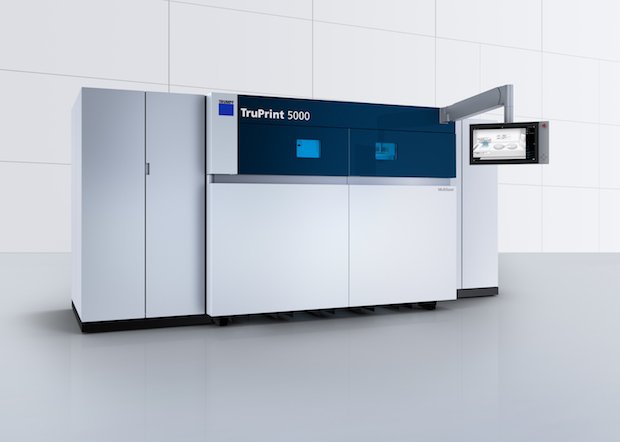TRUMPF, a German provider of machine tools, recently demonstrated the capabilities of its TruPrint 5000 3D printer as well as its newly developed green laser technology.
The TruPrint Laser Metal Fusion (LMF) 3D printer features a 500 °C pre-heater and full-field multi-laser equipment with three 500 Watt fiber lasers, to process materials such as high-carbon steel or titanium alloy components. Additionally, TRUMPF’s green laser is said to have the potential for gold printing in the jewelry industry.
“Tool and mold makers can now easily print forming tools, punches and dies. Previously, without preheating, that wasn’t possible. This makes it attractive for use in mechanical and plant engineering, as pure copper can be used to print particularly conductive inductors and heat exchangers,” said Tobias Baur, TRUMPF General Manager Additive Manufacturing with responsibility for technology.

Copper and 3D printing
Pure copper is known to have desirable material properties such as malleability, and high thermal and electrical conductivity. However, due to its conductivity, copper has been proven to be a difficult material for additive manufacturing as it reflects the heat applied by a laser beam. Nevertheless, alternative methods have been developed using electron beam melting (EBM) and Optomec’s trademark Aerosol Jet technology to 3D print copper components.
“Conventional systems use an infrared laser as the beam source, but its wavelength is too long and it can’t weld highly reflective materials such as copper and gold. This can be done with laser light in the green wavelength spectrum,” explained Thomas Fehn, TRUMPF General Manager Additive Manufacturing with responsibility for sales.
Green laser technology
During Formnext, TRUMPF demonstrated its green laser and pulse function for the first time by printing pure copper as well as other precious metals. In order to do this, the TRUMPF team connected its new TruDisk 1020 disk laser with a TruPrint 1000 3D printer. According to Fehn, this process will open up new possibilities for 3D printing, particularly in the electronics and automotive industries.
TRUMPF also believes that this technology will be beneficial in the jewelry industry, “the 3D printer doesn’t waste expensive gold and silver,” added Fehn. “Printing is therefore often more economical than milling or casting a piece of jewelry, which inevitably entails a loss of material.”

The TruPrint 5000
TRUMPF first debuted the TruPrint 5000 multi-laser 3D printer at Formnext last year. This year, Baur highlighted the printer’s capabilities to process carbon tool steel 1.2343, an extremely hard and wear-resistant material proficient in dissipating heat.
“The laser beam melts the component surface, which subsequently cools back down to room temperature. The components weren’t able to withstand this temperature drop, and cracks formed. That’s why the substrate plate of the TruPrint 5000 3D printer can be preheated to 500 degrees Celsius.”
“The material quality and surface of carbon steels are significantly better than without preheating, preventing fractures in the components.”

Keep the latest additive manufacturing news by subscribing to the 3D Printing Industry newsletter. Also, find us on Facebook and like us on Twitter.
For new opportunities across additive manufacturing visit 3D Printing Jobs.
Featured image shows 3D printed copper components. Photo via TRUMPF.

